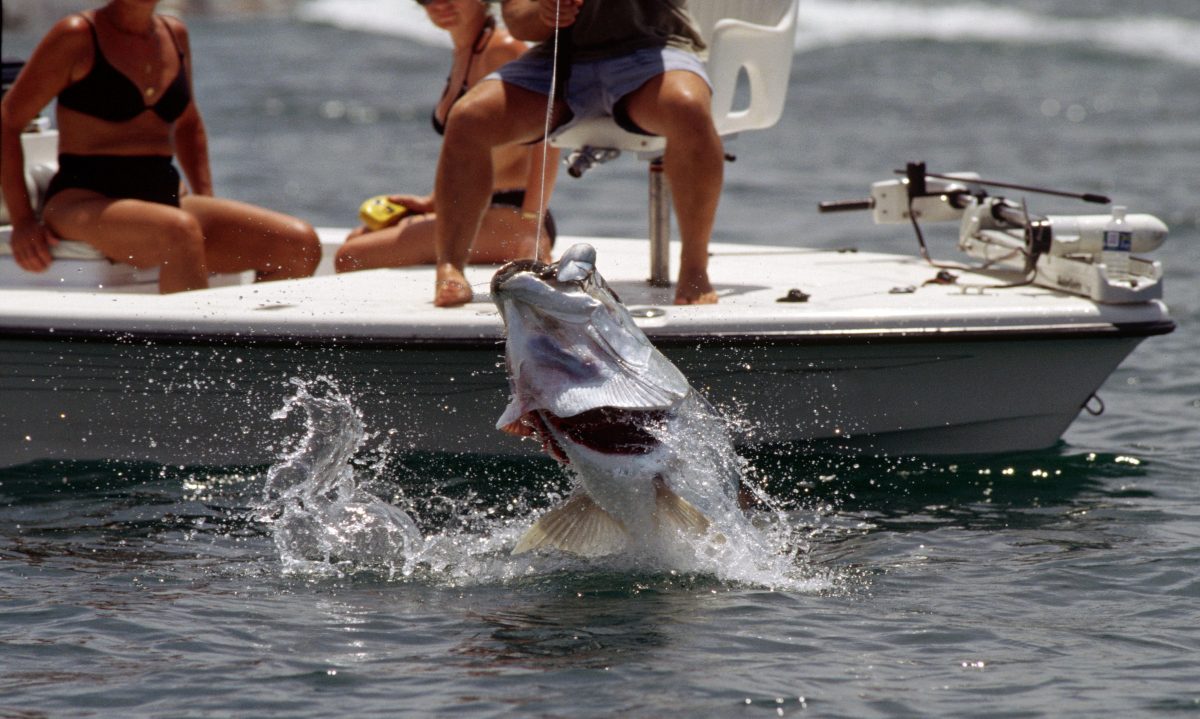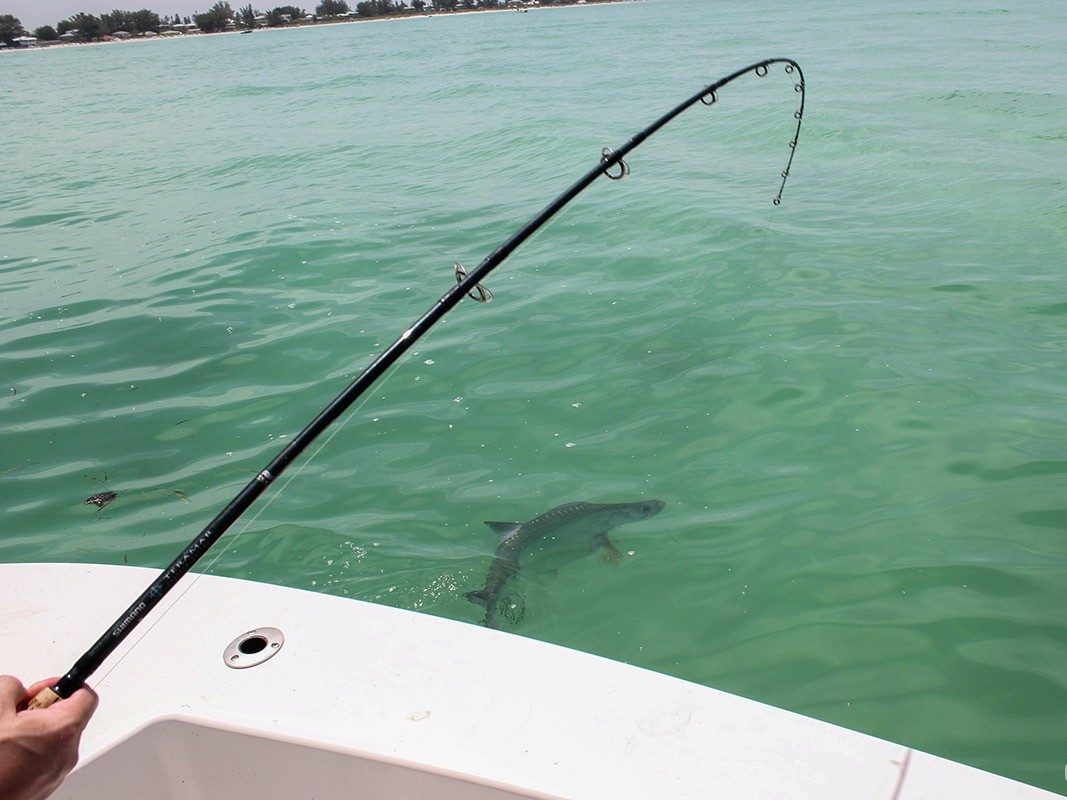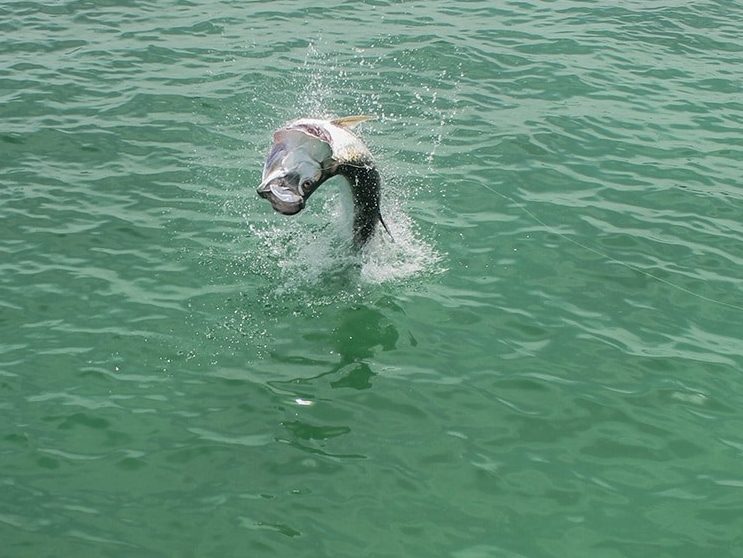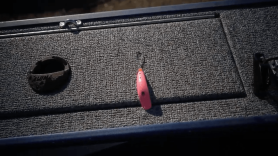

Landing a big tarpon is a dream for many anglers, and few fish fight harder than a big ‘poon.
Videos by Outdoors with Bear Grylls
Before you book your first tarpon outing, understand that hooking the fish and getting it to the side of the boat are very different propositions. Reaching the point of release on a big tarpon can take hours. To finish the fight you need a basic understanding of the proper technique and — complete focus.
Here’s a beginner’s guide to fighting one of the world’s greatest game fish:
Set the Hook:
A tarpon’s massive mouth is only slightly softer than the inside of a brass spittoon, so you need to set the hook hard. When you strike back against the weight of the fish, be ready to hit them with a series of hook sets to be sure the metal is in their mouth.
Then. . .
Anticipate the Jump:
Tarpon don’t take kindly to being hooked, and there’s no time to waste because the fish is likely to launch itself out of the water in one of those head-shaking aerial displays that make the tarpon such an iconic species. When the hook is set be ready to counter a jump, because it’s probably coming very soon. After the fish is hooked, try to gauge when another jump is coming by the angle of the line.
Bow to the Fish:
If you’re not ready to react — the first frantic leap may be your one and only look at the tarpon that just inhaled your bait. When fish jump, tense lines break, so you need to create slack in the line — this is achieved by “bowing,” or extending the rod tip toward the leaping fish. My first attempt on a 140-pound tarpon was spastic and late, and it almost cost me the fish.
Anticipate the jump, bow to the fish, and get back in the fight.
Keep Your Rod Tip Up:
Tarpon are masters at exploiting every opportunity to escape capture, and keeping your rod tip down and slack in the line while the fish is in the water is one of the best ways to let you tarpon spit the hook. When you are fighting, keep the rod tip up and maintain a bend in the rod. A slow, steady lift tires the fish more quickly than rapid yanks.

Set the Drag:
If you’re on a guided trip, your captain will likely help you find the sweet spot. If the drag is too loose you’ll create slack and the fish won’t meet much resistance when running. Consequently, it won’t tire itself out. If the drag is too tight the line could snap or your fishing rod might just end up in the sea. If you’re not using a guide, be sure your drag is tight enough to maintain resistance but lose enough to prevent the line from breaking. You’ll have to adjust on the fly according to the size of the fish.
Reel Down:
After lifting the rod, reel down to the fish. Lift steadily against the weight of the fish and gain line as you bring the tip of the rod back down toward the water. If the line is screeching off the reel, don’t reel but rather wait for the fish to slow down before you resume the chore of bringing in the line. Many anglers, excited by the thrill of hooking a big silver, don’t get into a steady rhythm and prolong the fight or lose the fish.
Counter the Fish’s Movements:
One essential element in tiring a tarpon quickly is countering the fish’s forward momentum. If the tarpon is heading toward the bow, keep the pressure on the rod toward the stern, working at all times on a tight line (unless there’s a jump). This will help tire the fish quickly and will end the fight sooner, reducing the risks you’ll lose your fish to passing sharks.

Stay in the Fight:
Remember that landing a big tarpon may take an hour or more. There’s no time to fall asleep, so you need to be aware of every move the fish is making and pay attention to the line. Keep the pressure on the fish throughout the fight, and be ready to move around the boat if necessary.
Sadly, you can do everything the right way and still lose the fish of lifetime — they call is fishing not catching.
One thing is for sure, you can’t catch them standing at the dock — get out there and give it a go.









